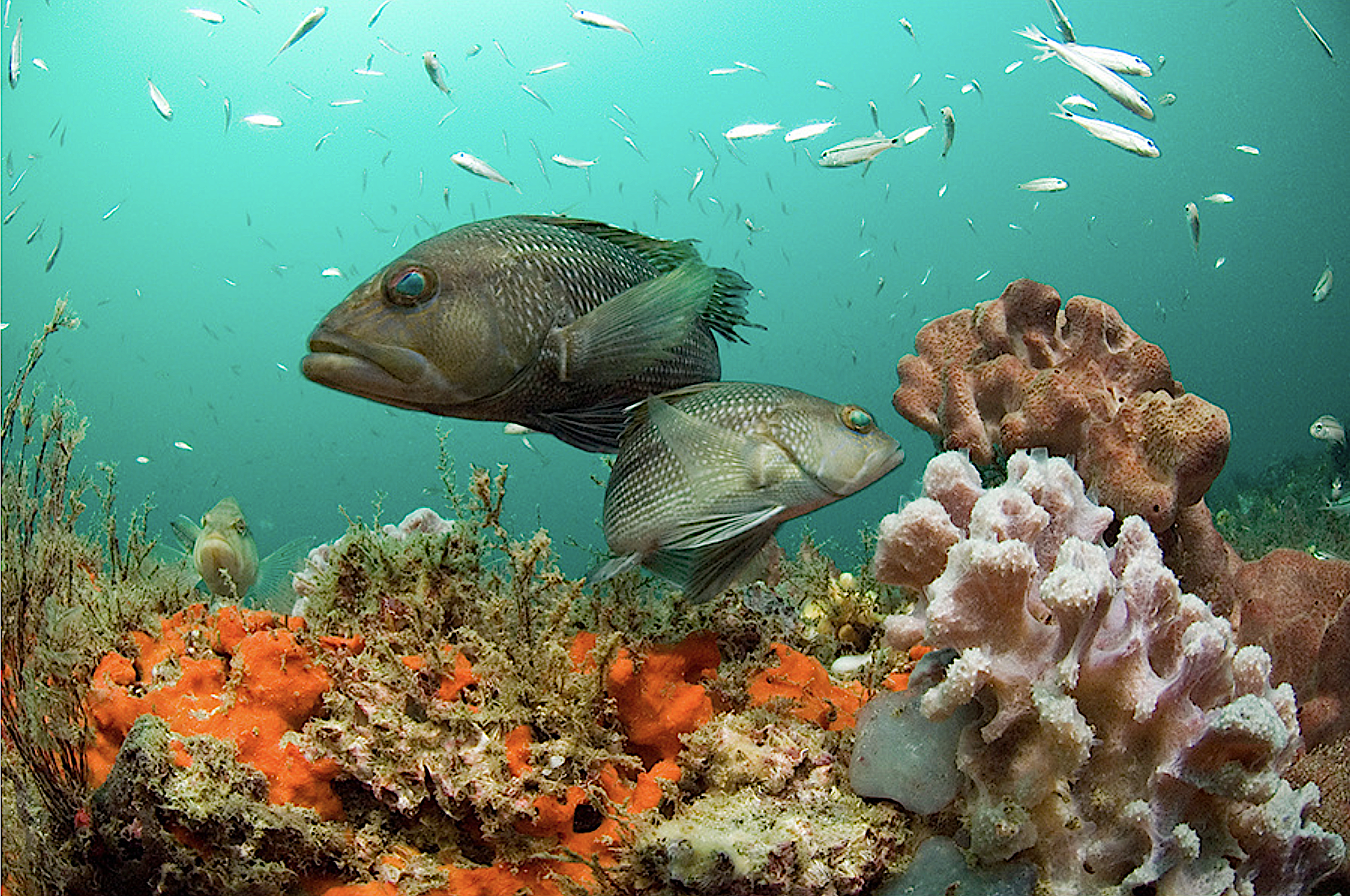What’s the best way to count reef fish?

Scientists compared two methods — high definition video and wire traps — to see which better sampled an array of fish off the Southeast coast.
Research Need
Surveying fish is key to understanding their population size, behaviors, and habitat use, which are crucial for fisheries management. But gathering this information on reef fish that live in deep water and near hardbottom (rocky and solid) habitat is often challenging. Recent regulations restricting commercial and recreational fishing mean scientists get less information from regular fishing activities. As a result, scientists are looking to new technologies to understand these fishes.
Currently the most common sampling methods for fish in reef habitats are traps and underwater video, but few studies have compared the two. A team of researchers set out to determine if the ratio of trap-caught species to video-observed species was different across the sampling area or varied by environmental conditions, habitat variables, or space.
What did they study?
From 2015 to 2019, the researchers studied reef fish along the Southeast coast, from North Carolina to Florida.
They attached two high-resolution underwater GoPro cameras to fish traps and deployed the gear at 1,500 randomly selected locations each year. They then identified the species and number of fishes captured by each.
They also gathered information about the underwater environment, like water depth, clarity, and temperature.
What did they find?
In total, the team collected and analyzed 7,034 trap-video samples.
The underwater video recordings proved highly effective. The research team observed 50 fish families on video, whereas they caught 29 fish from different families in traps. The most commonly trapped fish families were sea basses and groupers (48.6%), grunts (43.4%), sea breams and porgies (36.9%), snappers (34.3%), and triggerfish (27.7%).
Approximately 85% of fish species appeared significantly more often on video than in traps.
There were some exceptions. Traps caught two species (out of 40) significantly more often than video: the black sea bass and the bank sea bass.
The study found that the overall number of different species present at a given location, on average, was three to four times higher on video than in traps.
Anything else?
Depth and water clarity impact the efficacy of these two methods. In shallower waters off the Carolinas, traps were more effective than video, in part due to murkier waters. The study found that when water temperature was about 68°F, traps caught fewer species compared to video. Traps fared slightly better when the water was colder or warmer. Similarly, the traps caught more species in places with less hard, rocky ground at the bottom of the sea.
So what?
The team’s findings indicate that video provides a more comprehensive picture of the fish community, better capturing most species under most conditions than traps.
No method alone perfectly samples the entire reef fish community, but combining multiple methods — for example, traps and videos — provide a more complete view. Going forward, taking advantage of underwater video in addition to traps will be important for fisheries management.
Reading
Bacheler, N. M., Gillum, Z. D., Gregalis, K. C., Pickett, E. P., Schobernd, C. M., Schobernd, Z. H., Teer, B.Z., Smart, T.I., & Bubley, W. J. (2022). Comparison of video and traps for detecting reef fishes and quantifying species richness in the continental shelf waters of the southeast USA. Marine Ecology Progress Series, 698, 111-123.
Funding was provided by the National Marine Fisheries Service.
By Maya Afilalo
Lead photo courtesy of NOAA Fisheries.
The text from Hook, Line & Science is available to reprint and republish at no cost, but only in its entirety and with this attribution: Hook, Line & Science, courtesy of Scott Baker and Sara Mirabilio, North Carolina Sea Grant.

- Categories:



